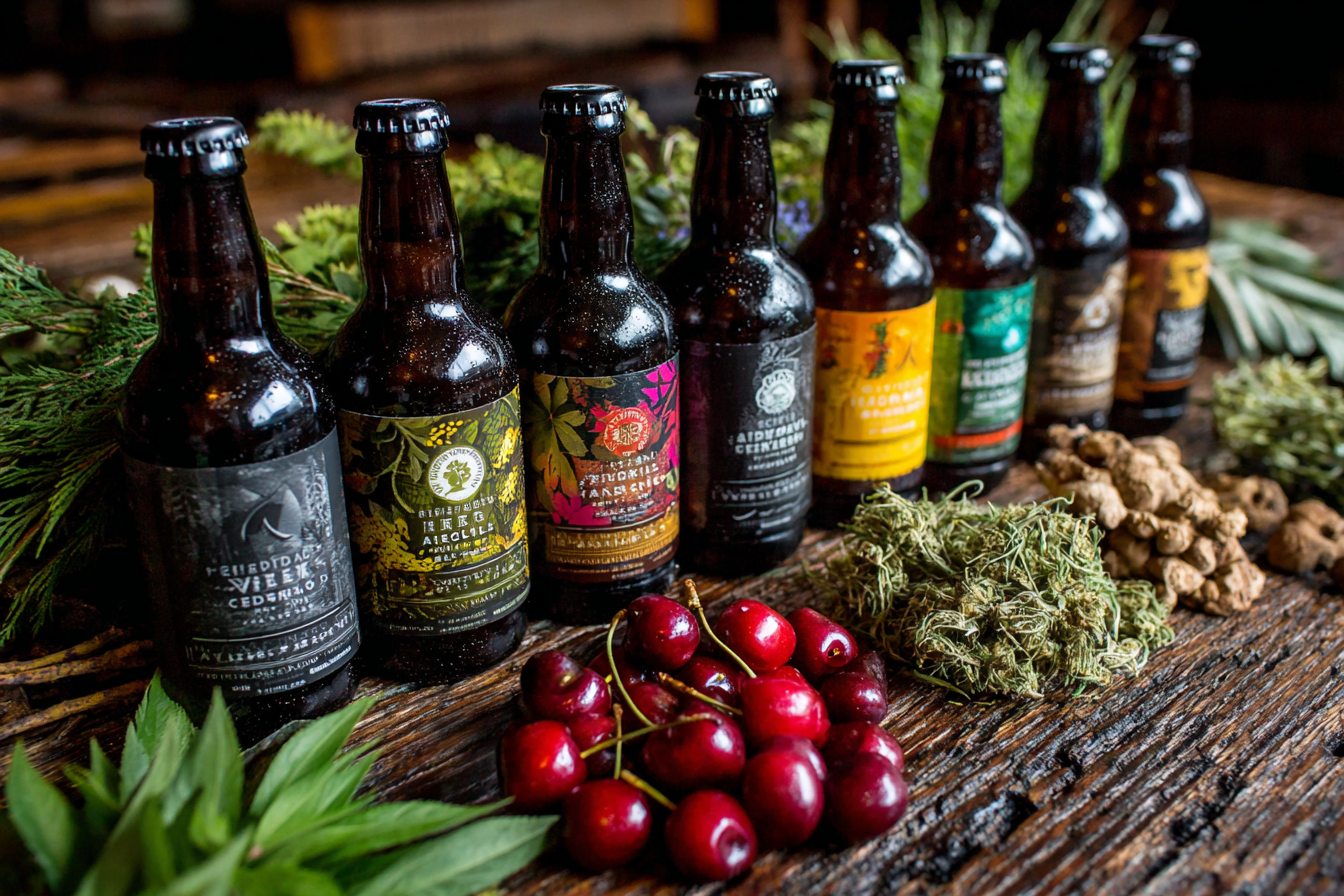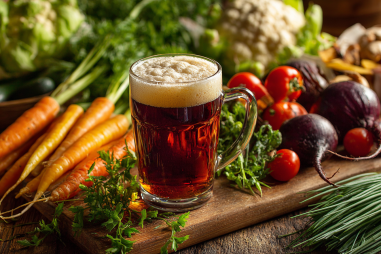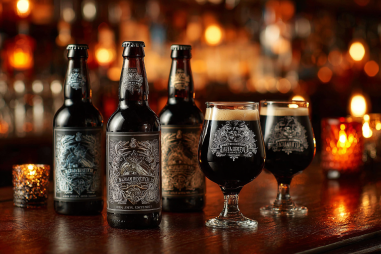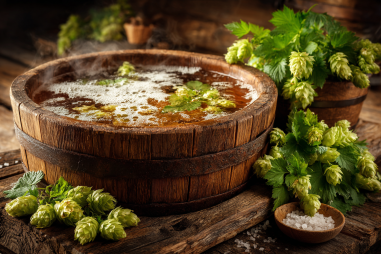American brewing culture has embraced wild beer styles with open arms, carving out a unique niche that both honors traditional European sour styles and pushes creative boundaries. Wild beers, known for their complex tartness, funky aromas, and spontaneous fermentation processes, have grown increasingly popular among craft beer lovers. This guide will walk you through the diverse landscape of American wild beer styles—from Berliner Weisse, the crisp and refreshing German-inspired sour, to funky American Wild Ales birthed through mixed fermentation. By exploring their characteristics, brewing methods, and typical ingredients, you’ll gain a deeper appreciation of the vibrant and experimental world of American wild beers.
Exploring the World of Wild Beer Styles in America
Wild beers refer to beers that are fermented with non-traditional yeast strains and bacteria, typically resulting in sour, funky, and often complex flavor profiles. Historically, many wild beers originated in Europe, relying on spontaneous fermentation triggered by airborne wild yeast and microbes. However, American craft brewers have taken these traditions and infused them with local creativity and innovation. In America, wild beer styles can be broadly categorized into three main types: Berliner Weisse, Gose, and American Wild Ales that involve mixed or spontaneous fermentation.
These beers often rely on microorganisms like Brettanomyces, Lactobacillus, and Pediococcus, which contribute to the characteristic tartness and funky notes. American brewers tend to favor mixed fermentation—employing a blend of conventional brewer’s yeast and wild yeasts or bacteria—to create balanced yet adventurous flavor profiles that excite the palate.
Understanding Berliner Weisse, Gose, and American Wild Ales
Berliner Weisse
Berliner Weisse is a low-alcohol, refreshing go-to sour with German roots. Characterized by a bright, crisp tartness, it is brewed with wheat malt which lends it a soft, bready base. The beer typically features a pale straw to light yellow appearance with a fluffy, white head.
Traditional Berliner Weisse combines Saccharomyces yeast fermentation with Lactobacillus bacteria, which create the hallmark sourness. With a relatively low ABV (usually around 3%), it’s often enjoyed as a sessionable beer perfect for warm weather. Sometimes, it’s served with flavored syrups like raspberry or woodruff to balance the tartness with sweetness.
Gose
Gose, another German-style sour, is distinctly known for its slightly salty profile, which comes from the addition of coriander and salt during the brewing process. Traditionally brewed in Leipzig, the Gose style has been widely embraced and adapted by American craft brewers.
The characteristics of a Gose include moderate acidity, a gentle tartness balanced by subtle saltiness, and herbal, citrus notes imparted by coriander. The style typically has a cloudy, straw-colored appearance with a creamy mouthfeel. American variations often experiment with added fruit or hops while maintaining the tart and refreshing core.
American Wild Ales
American Wild Ales are a broad category that often showcases the innovation and experimentation of U.S. brewers. Unlike Berliner Weisse or Gose, which are more defined styles, American Wild Ales tend to vary considerably in flavor and aroma, usually involving mixed fermentations that include wild yeasts like Brettanomyces and bacteria such as Lactobacillus and Pediococcus.
These beers can range from moderately sour to intensely funky and barrel-aged with notes of earthiness, barnyard, tropical fruit, or leather. Some American Wild Ales incorporate fruit, oak aging, or secondary fermentation in barrels, adding complex layers. They embody the spirit of terroir, often reflecting the unique microbial environment of their brewery or region.
The Role of Spontaneous and Mixed Fermentation
Wild beer fermentation typically falls into two categories: spontaneous fermentation and mixed fermentation.
Spontaneous fermentation relies on natural yeast and bacteria present in the environment rather than added cultured strains. This method is rarer in the United States due to the risk and unpredictability, but some breweries engage in it for truly unique, site-specific flavors that can’t be replicated elsewhere. The microbes settle on the wort during open-air exposure, often in coolships, and initiate fermentation naturally.
Mixed fermentation is far more common and offers brewers more control while harnessing wild yeast and bacteria. In this approach, brewers add a mix of traditional brewer’s yeast alongside wild strains like Brettanomyces and souring bacteria. The combination results in sourness balanced with fruity esters, funk from Brett, and often complex, layered aroma and taste profiles.
Both fermentation methods emphasize patience: wild beers may age from several months up to years, gradually developing depth and character.
Typical Ingredients and Flavor Influences
Many wild beers share a set of core ingredients, but individual brewers often experiment to create unique expressions.
- Malts: Wheat malts are common in Berliner Weisse and Gose to provide a light, soft body. American Wild Ales often use a blend of malted barley and wheat.
- Hops: Hops in wild beers tend to be used sparingly to avoid overshadowing the delicate sour and funky flavors. Some styles like Gose include traditional herbal elements like coriander.
- Microbes: The hallmark of wild beers. Lactobacillus and Pediococcus provide sourness, while Brettanomyces offers earthy, barnyard, and sometimes fruity funk.
- Adjuncts: Salt and coriander are signature additions in Gose. Fruits are frequently added in American Wild Ales to enhance complexity and aroma.
- Wood/Aging Vessels: Barrel aging is common for developing depth and complexity. Oak barrels or foeders contribute tannins and subtle wood flavors, as well as chamber conditions for microbial activity.
Altogether, these ingredients produce wildly diverse flavors—zesty citrus and green apple notes in Berliner Weisse, refreshing salty citrus in Gose, and funky, barnyard or fruity complexity in American Wild Ales.
Popular American Wild Beers Worth Trying
If you’re interested in exploring the flavor spectrum of American wild beers, here are a few renowned examples:
- Jester King Brewery’s Funk Metal – A bold American Wild Ale aged in oak mixed fermentation barrels, showcasing rich funk and balanced acidity.
- Anderson Valley’s Briney Melon Gose – A quintessential American take on Gose featuring melon flavors, sea salt, and coriander.
- New Belgium’s La Folie – Brown sour ale inspired by traditional Flanders styles, featuring layered tartness and complex dark fruit notes.
- Wicked Weed’s Pernicious IPA – A funky IPA blended with Brettanomyces, giving it a unique wild character atop hop bitterness.
- Russian River Temptation – A barrel-aged Berliner Weisse style sour with vibrant tartness and fruit additions.
Brewing Considerations for Each Wild Beer Style
Brewing wild beers presents exciting challenges and considerations:
- Sanitation and Microbial Management: Wild yeast and bacteria can be unpredictable. Brewers must maintain strict sanitation to avoid cross-contamination of other beer styles.
- Fermentation Time: Wild beers usually require extended aging periods, from several months to years, to develop desired sourness and funk.
- Temperature Control: Temperature significantly affects microbial activity. Some wild yeasts flourish at cooler temps, while others demand warmer conditions.
- Barrel and Wood Influence: Barrel-aging imparts complexity but requires ongoing monitoring of microbial balance and oxygen exposure.
- Balancing Flavors: Achieving harmony between sourness, funk, malt sweetness, hops, and adjuncts (like fruit or spice) demands skill and experimentation.
For homebrewers, starting with mixed fermentation using commercial Brettanomyces and Lactobacillus cultures can be a great introduction before exploring spontaneous fermentation or barrel aging.
Celebrating the Diversity and Creativity of American Wild Beers
The American wild beer scene is a vibrant playground where tradition meets innovation. Whether you’re sipping a tart Berliner Weisse with a refreshing zing, a salty and herbal Gose, or a deep, funky American Wild Ale loaded with complex layers, each beer tells a story of microbial magic and brewing artistry.
From farmhouse-style sour ales developed with patient barrel aging to playful, fruit-forward mixed fermentation experiments, American brewers continue to push wild beers into new and exciting territories. So next time you’re seeking a beer that defies convention and delights with its unpredictable flavors, consider an American wild beer—it’s sure to be a fascinating journey for your taste buds.







